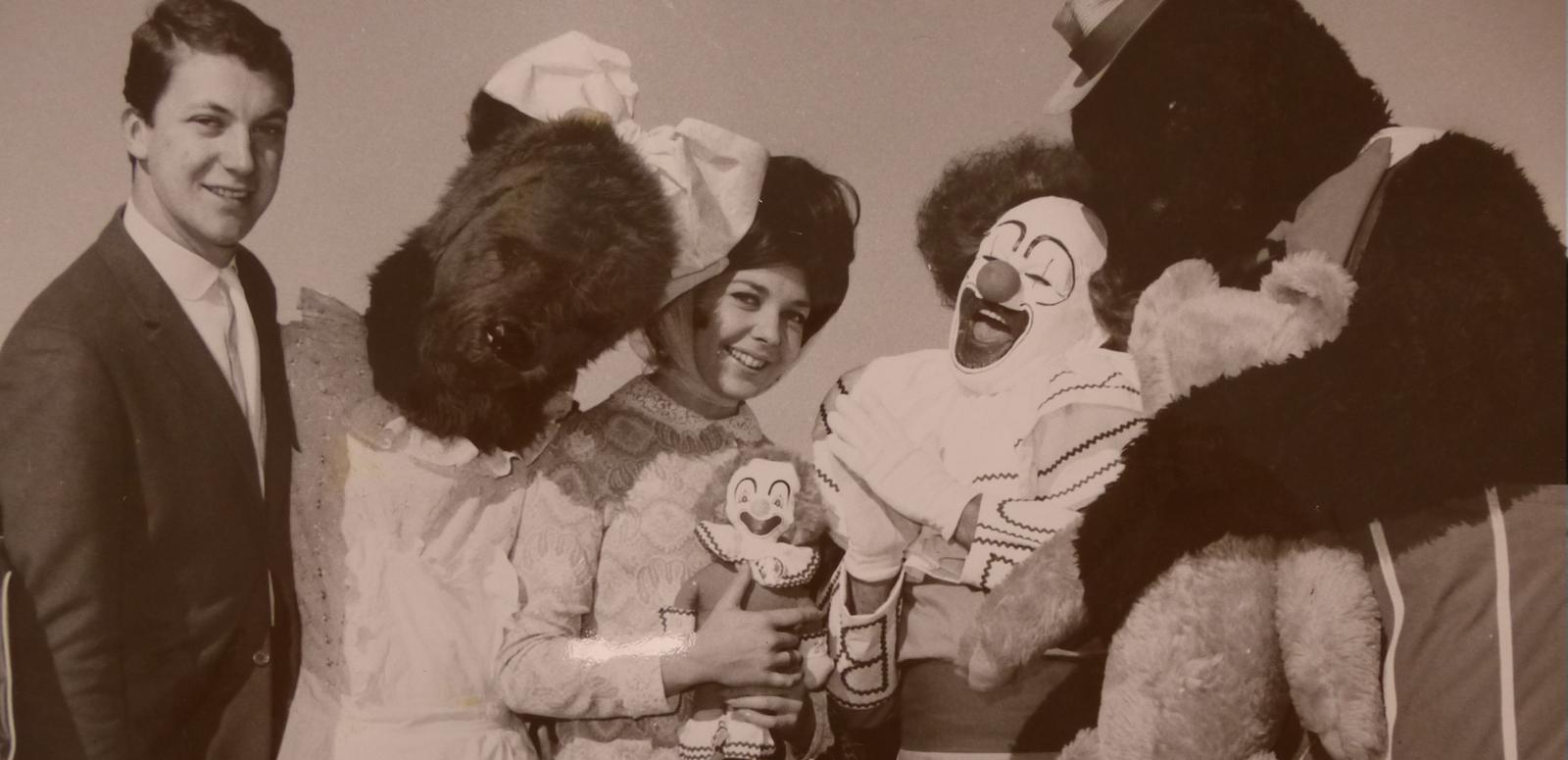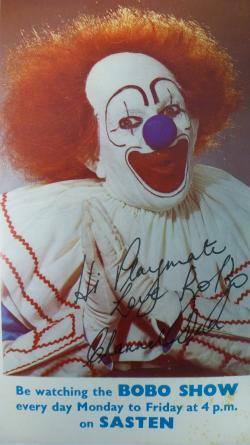The NFSA has acquired costumes, scrapbooks and other memorabilia recording the career of Hal Turner, who played one of the first recognisable children's characters on Australian television.

The NFSA has acquired costumes, scrapbooks and other memorabilia recording the career of Hal Turner, who played one of the first recognisable children's characters on Australian television.

When television station SAS10 launched in Adelaide on 26 July 1965, the first program broadcast was The Bobo Show starring Charles ‘Hal’ Turner as Bobo the Clown.
Gail Kelly, Hal Turner's daughter, has donated to the NFSA a large collection including Bobo costumes, scapbooks and memorabilia.
Gail performed alongside her father as Lenny the Lion and Lenny's costume is also part of the donation.
The collection includes Bobo merchandise from the mid-1960s, when Bobo's young fans could join The Bobo Club, purchase Bobo dolls and drink Bobo cordial.
Turner was frequently mobbed by children when he made public appearances in his clown costume.
Relive – or discover – the popularity of Bobo in our curated collection.
Bobo the Clown visits the Heinz Factory, c1960s. NFSA title: 1460033
Hal Turner started performing in vaudeville theatre when he was six years old. Having cut his teeth on the stage, he found himself in the right place at the right time when television began in Adelaide.
The Bobo character was originally developed at Adelaide's first television station, NWS9, which was then owned by a 28-year-old Rupert Murdoch. Turner joined NWS9 as a writer and head comedian for the Adelaide Tonight show but was approached to develop a character that would appeal to a younger audience.
Bobo the Clown initially appeared as part of The Channel Niners. Turner was soon hosting two radio programs as Bobo and writing a newspaper column. By the time he started with SAS10, Turner was flying each week to Melbourne station ATV0 to appear on The Magic Circle Club.
For more, visit the Bobo the Clown curated collection.
With thanks to the family of Hal Turner. RMIT graduate Eleanor Colla undertook an internship with the NFSA’s Documents and Artefacts curators, helping prepare the Hal Turner collection for cataloguing and conservation.
Want to be the first to hear stories and news from the NFSA?
Subscribe to our newsletter and never miss out.
This article was first published in 2017. The text was updated in 2023.
The National Film and Sound Archive of Australia acknowledges Australia’s Aboriginal and Torres Strait Islander peoples as the Traditional Custodians of the land on which we work and live and gives respect to their Elders both past and present.